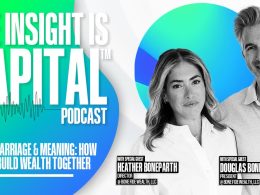by Eugenio Alemàn, Chief Economist, Raymond James
Chief Economist Eugenio J. Alemán discusses current economic conditions.
Markets were taken by surprise by Federal Reserve (Fed) Chair Powell’s strong suggestion that a rate cut in December is not a certainty, as they were sure they were going to get one at December’s Federal Open Market Committee (FOMC) meeting. During the press conference, Powell reiterated several times that an interest rate cut in December was not a “foregone conclusion,” and when the press conference was over, markets were trying to digest the reasons for such a strong pushback from the Fed chair.
Typically, the Fed does not want to contradict the markets and aligns with what markets are expecting. This time around, however, the uncertainty around the path forward pushed the Fed Chairman to confront market expectations head-on, something the Fed chair has seldom done before. There were probably several reasons for the pushback. One of these has to do with internal FOMC discussions, which he said reflected large disagreements between members of the Fed. So wide was the disagreement that of the two FOMC members opposed to the decision, one wanted a 50 basis point reduction in the federal funds rate, while the other dissenter wanted no change.
The second reason is probably related to the government shutdown and what it is doing to economic data releases. Although the Fed chair indicated that the Fed is not driving completely blind, as it has access to private data releases, initial jobless claims, and job openings coming from individual states, and information it gets from the Beige book, the disagreement is probably related to the lack of information compared to periods when data was flowing. Thus, it seems that many members wanted to take a step back and wait to study the effects of the 150 basis point reduction in the federal funds rate last year before proceeding with more cuts.
Third, although the pre-tariff disinflationary process is still alive and well, the risks for a sustained increase in inflation have increased, according to some of the members of the Fed. The next three graphs show why this may be the case. The first graph shows real personal consumption expenditures (PCE) segmented into two broad categories. The first category is real PCE excluding food, energy, and housing consumption as a percentage of total real PCE. The second category is real PCE in housing as a percentage of total real PCE. The first bar shows that real PCE excluding food, energy, and housing represents 75% of total PCE, while the second bar shows that real PCE in housing accounts for just 14% of total real PCE.
The second graph shows how the prices of these components of real PCE have moved over the years. As we can see, although housing prices have continued to move down on a year-over-year basis, and we expect this trend to continue during the next year, prices of goods excluding food, energy and housing are moving up. Recall that these prices represent 75 percent of total consumption, so Fed members are concerned that this could become a problem. So far, this increase in prices excluding food, energy and housing has not been followed by increases in housing prices, but the Fed is not convinced that this will continue to be the case and would like to err on the side of caution.
The third graph shows the evolution of the price of energy goods and services. In this graph, we can see that energy prices have had a flat-to-deflationary effect on inflation since early 2023, which, if sustained, will help keep overall prices contained. However, this is not a sure thing and is probably one of the reasons why many Fed members may want to wait and be more cautious.
Although we understand these risks and why Fed officials pushed back on the certainty of another rate cut in December, we still believe that, barring a large upward surprise from energy and/or housing prices, there is still a high probability that the Fed will lower rates again in December.
Copyright © Raymond James


















